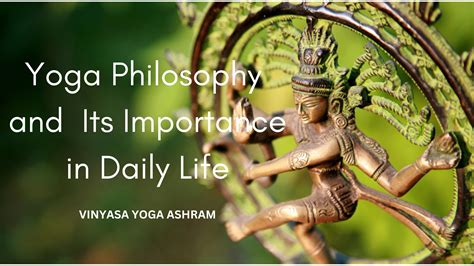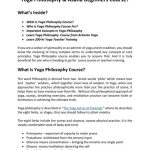The Philosophy Behind Modern Yoga Practice: A Holistic Approach to Mind, Body, and Spirit
Yoga is often understood through its physical postures, or asanas, but the practice goes far beyond stretching and strengthening muscles. Rooted in ancient philosophy, yoga encompasses a comprehensive approach to physical health, mental well-being, and spiritual growth. This article explores the multifaceted philosophy behind yoga, delving into its historical roots, modern interpretations, and practical applications in today’s society.
Introduction
Yoga is a dynamic and evolving practice that integrates the mind, body, and spirit. Originating in India thousands of years ago, yoga combines physical postures, breathing exercises, meditation, and ethical guidelines. While the modern world often associates yoga with fitness, its deeper philosophical aspects offer a profound system for self-exploration, spiritual enlightenment, and personal growth. The purpose of this article is to explore the philosophy behind yoga and how it can be applied in daily life.
Key Concepts of Yoga Philosophy
At the heart of yoga lies a set of core principles that guide both physical and mental practices:
- Asana: The physical postures that most people associate with yoga.
- Pranayama: Controlled breathing techniques aimed at regulating energy and calming the mind.
- Yamas and Niyamas: Ethical and moral principles that guide behavior, such as non-violence (Ahimsa) and truthfulness (Satya).
- Dhyana: Meditation, or the practice of quieting the mind to achieve clarity and inner peace.
- Samadhi: The ultimate goal of yoga, representing a state of complete harmony and enlightenment.
These key concepts are interconnected, with each playing a role in the holistic philosophy of yoga.
Historical Context
The origins of yoga can be traced back to ancient India, with references found in texts such as the Vedas and Upanishads, which date as far back as 1500 BCE. Initially, yoga was primarily a spiritual discipline focused on self-realization and connection to the divine. Over time, it developed into a comprehensive system, particularly with the influence of the Yoga Sutras of Patanjali, which outlined the eight limbs of yoga—a framework for achieving spiritual enlightenment through ethical living, meditation, and physical practices.
| Era | Key Developments in Yoga |
|---|---|
| Vedic Period (1500–500 BCE) | Earliest references to yoga in the Vedas, focusing on rituals and spiritual practices. |
| Upanishadic Period (800–400 BCE) | Yoga philosophy begins to develop as a means of attaining liberation (Moksha). |
| Classical Period (400 BCE–400 CE) | Compilation of the Yoga Sutras by Patanjali, codifying the philosophy and practice of yoga. |
| Post-Classical Period (500–1700 CE) | Development of Hatha Yoga, focusing on physical postures and breathing techniques. |
| Modern Period (1800–present) | Yoga becomes globalized, with a focus on both spiritual and physical benefits. |
Current State Analysis
In the modern world, yoga has evolved into a diverse practice with various styles, such as Vinyasa, Hatha, Ashtanga, and Yin. While each style emphasizes different aspects—whether it’s the flow of postures, alignment, or holding poses—they all share the underlying philosophy of unity between mind, body, and spirit. However, with the rise of yoga as a commercial fitness practice, the philosophical roots are sometimes overshadowed by a focus on physical appearance and performance.
Challenges in the Modern Interpretation of Yoga
- Overemphasis on physical postures at the expense of mental and spiritual practices.
- Commercialization of yoga, leading to a loss of traditional teachings and values.
- Lack of understanding of the deeper ethical principles that guide the practice.
Proposed Solutions
- Integrating philosophy and meditation into yoga classes to maintain a balanced approach.
- Encouraging students to study texts such as the Yoga Sutras to understand the broader scope of yoga.
- Promoting teachers who prioritize the full spectrum of yoga philosophy, not just physical aspects.
Practical Applications of Yoga Philosophy
Yoga philosophy can be applied beyond the mat, offering tools for personal growth, ethical living, and mental well-being. Some of the practical applications include:
- Mindfulness: The practice of staying present and aware in daily activities.
- Ethical Decision-Making: Using the Yamas and Niyamas to guide behavior in personal and professional life.
- Stress Management: Implementing Pranayama and meditation to manage stress and improve focus.
- Self-Discipline: Developing the habit of regular practice to cultivate physical and mental resilience.
Case Studies
Real-life examples of how individuals and organizations have integrated yoga philosophy into their lives:
| Case Study | Philosophical Focus | Outcome |
|---|---|---|
| Athlete Incorporating Yoga | Mindfulness and Asana | Improved performance and mental focus during competitions. |
| Corporate Wellness Program | Pranayama and Stress Reduction | Decreased employee burnout and increased productivity. |
| Personal Growth Through Meditation | Dhyana and Self-Awareness | Enhanced emotional regulation and a sense of inner peace. |
Stakeholder Analysis
The philosophy behind yoga impacts various stakeholders, from practitioners to instructors to health and wellness industries:
- Practitioners: Gain personal growth, mental clarity, and physical health.
- Instructors: Must balance teaching the physical practice with imparting philosophical knowledge.
- Health and Wellness Industry: Needs to ensure the commercialization of yoga doesn’t compromise its integrity.
Implementation Guidelines
To effectively integrate yoga philosophy into modern practice, consider the following steps:
- Incorporate short discussions of yoga philosophy into classes.
- Encourage regular meditation and mindfulness alongside physical practice.
- Create resources for students to study the ethical principles and history of yoga.
Ethical Considerations
The practice of yoga raises several ethical concerns, particularly when it comes to respecting its cultural roots and preventing the commercialization from diluting its true meaning. Key ethical considerations include:
- Avoiding cultural appropriation by acknowledging yoga’s Indian heritage and giving credit to traditional teachings.
- Ensuring that yoga is accessible to everyone, regardless of physical ability, financial status, or background.
- Promoting inclusivity by offering variations of postures and practices to accommodate diverse populations.
Limitations and Future Research
While yoga philosophy offers profound insights, there are limitations to its application in modern life:
- Cultural Translation: Yoga’s ancient texts are deeply embedded in the context of their time, making it difficult for modern practitioners to fully grasp their meanings without extensive study.
- Research Gaps: While studies have explored the benefits of yoga on physical health, more research is needed on its mental and spiritual benefits, particularly in diverse populations.
- Accessibility: Despite yoga’s growth, it remains inaccessible to many due to cost, location, or cultural barriers.
Expert Commentary
Experts agree that while modern yoga has shifted its focus to physical health, the philosophical underpinnings remain critical to understanding and benefiting fully from the practice. By integrating ethical guidelines, mindfulness, and meditation, practitioners can experience the transformative power of yoga on a deeper level.








